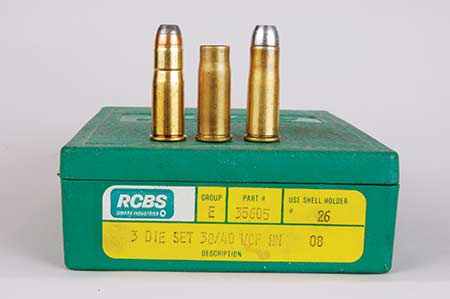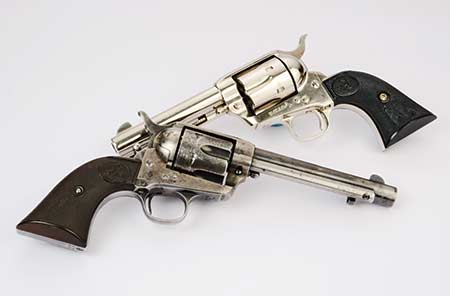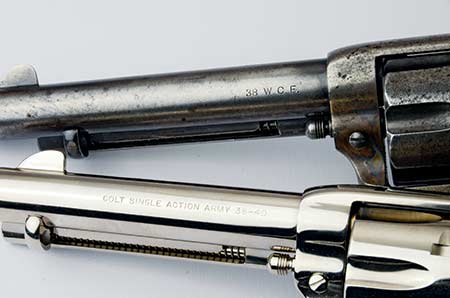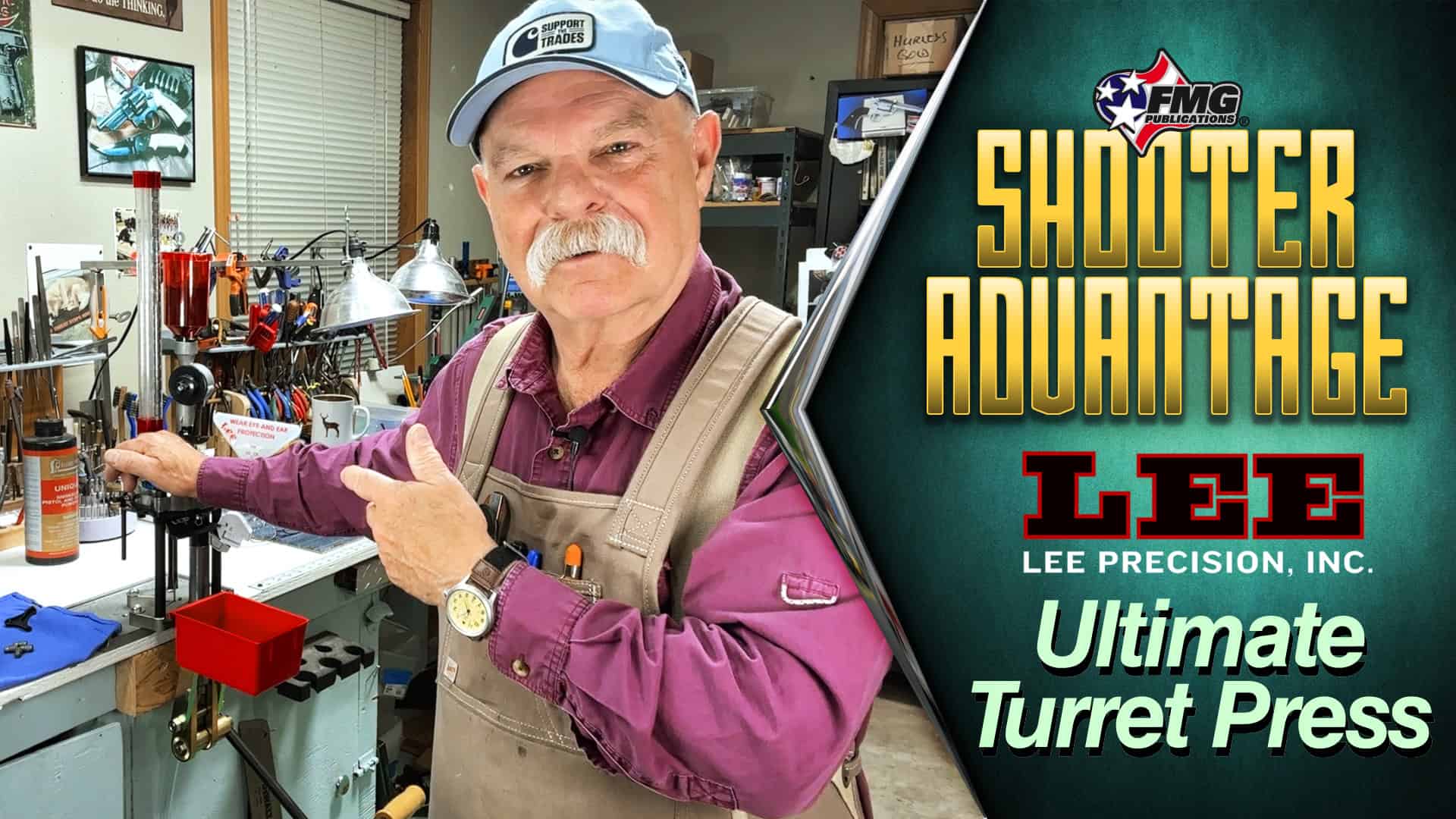Back In The Saddle
The .38-40 Was The 3rd Most Popular Colt SAA Chambering.
It’s One Of Duke’s Favorites.
After a 20-year near-total hiatus away from Colt SAA’s so I could focus on doing books on other types of historical firearms, I’ve returned to my first true love. In the last two months of 2016 I bought four Colt SAA’s. Two of them were .38 WCF’s or .38-40’s in modern terms. One was made in 1904 and is a mite cosmetically bedraggled but mechanically fine. The other was bought new-in-box and made about a dozen years back.
Winchester Repeating Arms introduced the .38 WCF around 1879 hence WCF stands for Winchester Centerfire. The .38-40 moniker came later and in my opinion was likely started by Marlin because they stamped their lever guns so chambered as .38-40. Colt added it to their SAA line-up in 1884.
Misleading Nomenclature
From its inception there has been a conundrum about this cartridge. It is not .38 caliber by any means or measurement. Cartridge caliber is determined by bullet size or barrel bore or groove diameter. The .38 WCF from the beginning used 0.400-inch bullets as do modern factory loads with jacketed bullets. The Colt SAA handloader using cast bullets should pick a diameter from 0.401 inch to 0.403 inch as dictated by the revolver’s barrel/cylinder dimensions.
By the end of the 1st Generation (1941), production of the .38 WCF was in third place (.45 Colt and .44-40 were first and second). Counting all variations such as Bisley and Target models of Colt SAA’s, my research books say 50,520 were made in total.
My first .38 WCF Colt SAA came in 1975. It was one of those all-gray patina guns that still functioned well but had certainly been “messed with” in the past. Its triggerguard bore a .44CF stamp meaning it had originally been a .44 WCF and since all serial numbers matched obviously someone along the way had rebarreled and recylindered it to .38 WCF. I played about with it for a couple years. At this time in my life I don’t even remember where or to whom I traded or sold it.
Another one came along in 1983 which had been manufactured in 1914. I kept it for 30 years but after Colt reintroduced the .38-40 in their 3rd Generation SAA’s in 1993 it was seldom fired. And so it was sold when I developed the World War II full-auto bug.
Note I referred to the cartridge as .38-40 in the above paragraph. Colt began labeling them so at their reintroduction but custom-ordered ones could be stamped .38 WCF. I have them both ways. Colt also furnished their new .38-40’s in both blue with color case-hardened frame and fully nickel-plated. Again I have them both ways.
For all three of Colt’s manufacturing generations the standard barrel lengths have been 4-3/4, 5-1/2 and 7-1/2 inches. Without having a shred of proof, this is my opinion: the 1st Generation, the 4-3/4-inch length dominated with the 5-1/2-inch second and the 7-1/2-inch length in distant third place. I believe the same is true of these 3rd Generation Colt SAA .38-40’s and I’ve managed to snag samples of each length. (There were no 2nd Generation Colt SAA .38-40’s made.)

Most modern .38-40 reloading dies do not set fired cases shoulders back
enough for easy chambering in the modern SAA. Duke’s set, made in 1983,
do so. Note the difference in shoulders in (left to right) current Winchester
factory load, a case fired in modern chamber and handload with shoulder set back properly.
Generatio Concerns
If it appears I favor the 3rd Generation SAA .38 WCF/.38-40’s over the 1st Generation ones previously owned it’s because I do. Many 1st Generation .38 WCF’s had barrel/cylinder dimensions all over the map from 0.400 to 0.408 inch for barrel groove diameters and from 0.400 to 0.410 inch on cylinder chamber mouths. Every single 3rd Generation .38 WCF/.38-40 I have measured has had 0.400-inch barrel groove diameters and 0.400- to 0.401-inch chamber mouths. All 3rd Gen .38-40’s of my experience have been amazingly accurate in terms of 25-yard groups.
My .38-40 enthusiasm aside there is one trouble spot of which to be aware when purchasing a 3rd Generation sample: Most if not all modern reloading dies do not resize cases properly. One guy called me spitting mad at Colt because his reloads would not chamber in his new Colt. I asked if factory loads did so. The answer was, “Yes.” My response did not make him happy. It was, “Then the problem is your dies, not the revolver.”
The problem is most modern dies do not set the fired cases’ shoulders back far enough to match factory ammo. My RCBS dies made in 1983 do set shoulders back appropriately so my loads chamber freely in all .38 WCF long guns or handguns in which they have been tried. A shooting friend had to get his RCBS Cowboy resizing die ground off a mite in order for his reloads to fit his Colt SAA’s.
After decades of Colt SAA .38-40 handloading, one combination is assembled most often on my reloading bench. This is 5.5 grains of IMR Trail Boss under 170- or 180-grain bullets based on Magma Engineering’s .38-40 cast bullet design or my own cast ones from RCBS mold 40-180CM.
It’s good to be back in the .38-40 saddle again!





